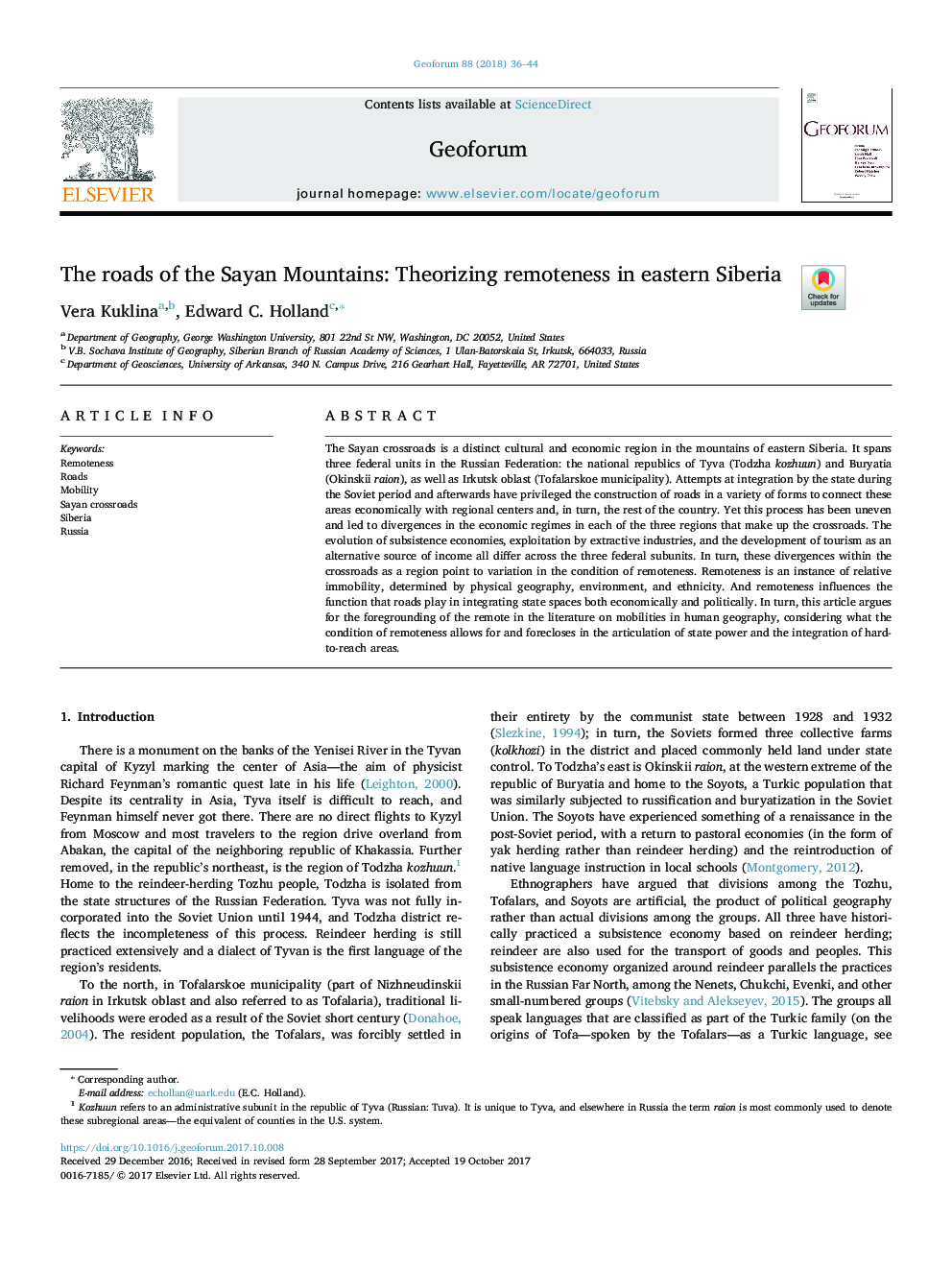| Article ID | Journal | Published Year | Pages | File Type |
|---|---|---|---|---|
| 7353863 | Geoforum | 2018 | 9 Pages |
Abstract
The Sayan crossroads is a distinct cultural and economic region in the mountains of eastern Siberia. It spans three federal units in the Russian Federation: the national republics of Tyva (Todzha kozhuun) and Buryatia (Okinskii raion), as well as Irkutsk oblast (Tofalarskoe municipality). Attempts at integration by the state during the Soviet period and afterwards have privileged the construction of roads in a variety of forms to connect these areas economically with regional centers and, in turn, the rest of the country. Yet this process has been uneven and led to divergences in the economic regimes in each of the three regions that make up the crossroads. The evolution of subsistence economies, exploitation by extractive industries, and the development of tourism as an alternative source of income all differ across the three federal subunits. In turn, these divergences within the crossroads as a region point to variation in the condition of remoteness. Remoteness is an instance of relative immobility, determined by physical geography, environment, and ethnicity. And remoteness influences the function that roads play in integrating state spaces both economically and politically. In turn, this article argues for the foregrounding of the remote in the literature on mobilities in human geography, considering what the condition of remoteness allows for and forecloses in the articulation of state power and the integration of hard-to-reach areas.
Keywords
Related Topics
Social Sciences and Humanities
Economics, Econometrics and Finance
Economics and Econometrics
Authors
Vera Kuklina, Edward C. Holland,
